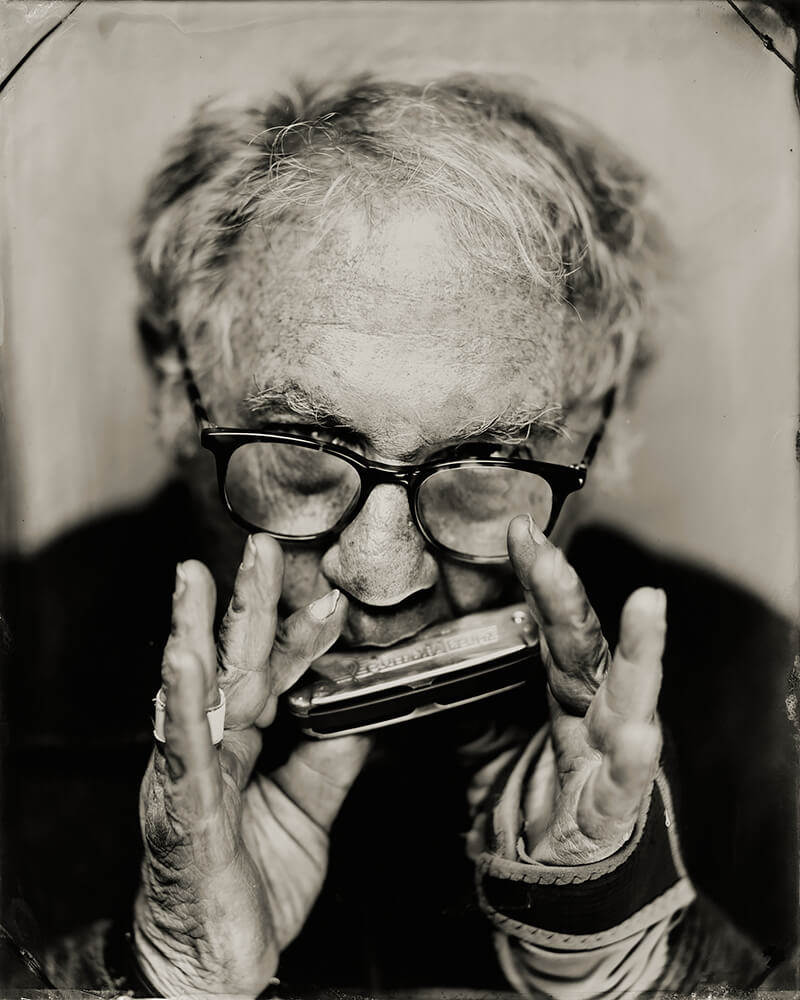Larry Fink is an American photographer best known for his black-and-white images of people at parties and in other social situations. Fink was born in 1941 in Brooklyn, New York. His father, Bernard Fink, was a lawyer, and his mother, Sylvia Caplan Fink, was an anti-nuclear weapon activist and an elder rights activist for the Gray Panthers. His younger sister was noted lawyer Elizabeth Fink (1945–2015). He grew up in a politically conscious household and has described himself as
"a Marxist from Long Island." He studied at the New School for Social Research in New York City, where photographer
Lisette Model was one of his teachers and encouraged his work.
He has been on the faculty of Bard College since 1986. Earlier he taught at other institutions including the Yale University School of Art (1977–1978), Cooper Union School of Art and Architecture (1978–1983), Parsons School of Design, and New York University.
Fink's best-known work is
Social Graces, a series of photographs he produced in the 1970s that depicted and contrasted wealthy
Manhattanites at fashionable clubs and social events alongside working-class people from rural Pennsylvania participating in events such as high school graduations.
Social Graces was the subject of a solo exhibition at the
Museum of Modern Art in 1979 and was published in book form in 1984. A
New York Times reviewer described the series as exploring social class by comparing
"two radically divergent worlds", while accomplishing
"one of the things that straight photography does best: provid[ing] excruciatingly intimate glimpses of real people and their all-too-fallibly-human lives."
In 2001, for an assignment from
The New York Times Magazine, Larry Fink created a series of satirical color images of President George W. Bush and his cabinet (portrayed by stand-ins) in scenes of decadent revelry modeled on paintings by Weimar-era painters Max Beckmann, Otto Dix and George Grosz. The planned publication of the series was canceled after the September 11 attacks, but was displayed in the summer of 2004 at the
PowerHouse Gallery in New York, in a show titled
The Forbidden Pictures: A Political Tableau.
Larry Fink was the recipient of
Guggenheim Fellowships in 1976 and 1979 and National Endowment for the Arts Individual Photography Fellowships in 1978 and 1986. In 2002 he received an honorary doctorate from the College for Creative Studies in Detroit.
Source: Wikipedia
Working as a professional photographer for over fifty-five years, Larry Fink has had one-man shows at New York’s
Museum of Modern Art, and the
Whitney Museum of American Art amongst others. On the European continent, he has had one-man shows at the Musee de l’Elysee in Lausanne, Switzerland, the Musee de la Photographie in Charleroi, Belgium, and in 2019 a retrospective at Fotografia Europea in Italy. He was awarded the “Best of Show” for an exhibition curated by Christian Caujolle at the
Arles Festival of Photography in France. In recent years retrospective shows have been shown at the Museo de Arte Contemporaneo in Panama City as well as six different museums in Spain.
This past year in 2018, Larry had a solo show featuring
The Boxing Photographs at
The Philadelphia Museum of Art, and at the deCordova Sculpture Park and Museum with the show Primal Empathy. Larry was the recipient of the
Lucie Award for Documentary Photography in 2017, and in 2015, he received the
International Center of Photography (ICP) Infinity Award for Lifetime Fine Art Photography. He has also been awarded two
John Simon Guggenheim Fellowships and two National Endowment for the Arts, Individual Photography Fellowships. He has been teaching for over fifty-two years, with professorial positions held at Yale University, Cooper Union, and lastly at Bard College, where he is an honored professor emeritus.
Larry’s first monograph, the seminal
Social Graces (Aperture, 1984) left a lasting impression in the photographic community. There have been twelve other monographs with the subject matter crossing the class barrier in unexpected ways. Two of his most recently published books were on several “Best Of” lists of the year: The Beats published by Artiere /powerhouse and Larry Fink on Composition and Improvisation published by Aperture. As an editorial photographer,
The New Yorker and
Vanity Fair have been amongst a long list of accounts. He is currently collaborating with fashion house Jil Sander based in Milan, Italy.
In the summer of 2017, Larry’s work from
The Beats and The Vanities was on display at Giorgio Armani’s beautiful Armani/Silos exhibition space in Milan, Italy. This exhibition was the first of its kind for the space. Additionally, the Newport Museum of Art in Rhode Island exhibited pictures from his monograph
Somewhere There’s Music.
Fink On Warhol: New York Photographs of the 1960s, Larry’s latest monograph was released Spring 2017 featuring rare photographs of Andy Warhol and his friends at the Factory interspersed with street scenes and the political atmosphere of 1960s New York. Also released in 2017 was
The Polarities chronicling five years of recent work, and
The Outpour containing images taken at and around the Women’s March on Washington, D.C.
Source: www.larryfinkphotography.com
